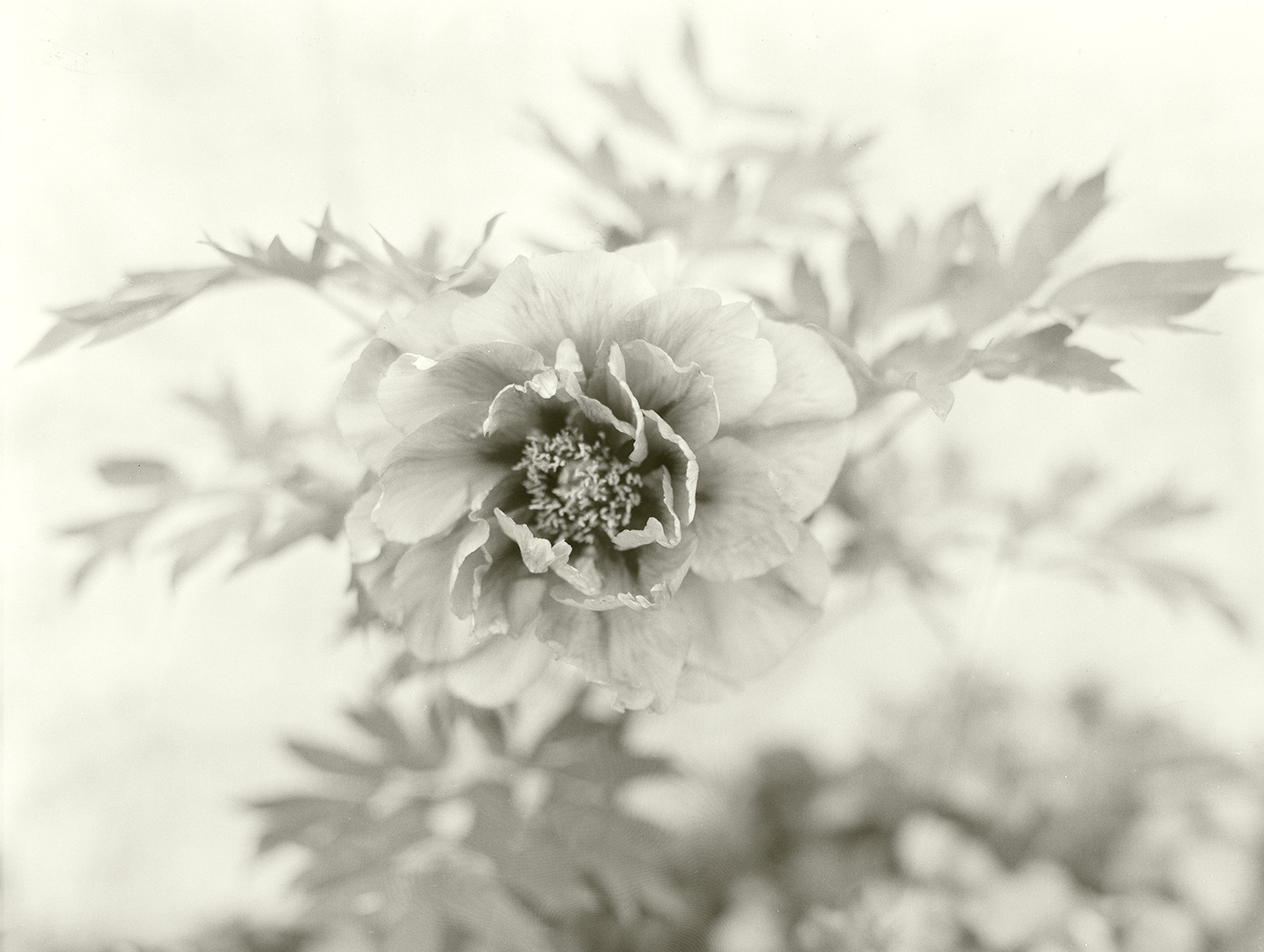The Moutan, or Tree Peony
It is the flower depicted in the arts of Asia, in paintings, porcelains, textiles, and verse. The tree peony was not a flower I knew growing up, and upon seeing it in different designs, I perceived it simply as an ornamental image, or a symbol from mythology, like the Phoenix. It seemed to me that such a flower was too beautiful to exist in this world and it was not for many years after my first encounter that I learned its name.
You know this flower, said Walter Chappell, who introduced me to the tree peony through his own photographs of them, made in the late 1950s at the Gratwick Estate in Pavilion, New York.* I was mesmerized by their beauty. Now knowing that they were real flowers, of this world,
I decided immediately to begin growing them in order to photograph them, and acquired my first plant, a Japanese cultivar named Kamada Nishiki, in 1998. My photographs of the tree peony started to become something a little outside of floral studies of a particular flower. I engaged with them as portraits to illuminate the spirit of the plant, and began to see that my subject had become symbolic of the aspirations I held for growth, not just in my work, but within.
Distinct from the better known herbaceous peony, the tree peony is a deciduous shrub retaining a permanent woody structure above ground. It is native to Southwestern China and Tibet, and has admirably adapted to many climates. It can endure extremes of cold and heat, and periods of drought. Perhaps the only thing to cause it to suffer is too much dampness, and though it may not thrive under it, it will survive. Tree peonies are admired not only for the beauty of their flowers, but also for the graceful carriage of their branches and leaves, their resilience, longevity, and valuable place in herbal medicine. The flowers symbolize nobility, loyalty, friendship and enduring love. In Tibetan Buddhist paintings they are companions to spiritual development. Cultivating tree peonies cultivates patience. Whether propagated from seed, or more commonly by grafting, many plants require several years to reach flowering, more to attain full size, and then perhaps still more to express the full range of their characteristics. This time of cultivation, of waiting during the slow process of maturation, is an experience integral to spiritual work, when trusting a path, a practice without an outcome that can be completely assured. The flower I have awaited is a symbol of my faith. It expresses my efforts to unite my aspirations with reality, my love with my work.
All photographs from this series were made with an 8 x 10 view camera and black and white film, and realized as silver gelatin contact prints in the darkroom. A few images have been enlarged digitally, through drum scanning of the negative, and realized as pigment ink prints on cotton rag papers.
* Linwood Gardens is a private garden established by Lee Gratwick to preserve the historic collection of tree peonies cultivated by her father, William H. Gratwick III, on their family estate. Within the original grounds designed by Thomas Fox, the gardens feature tree peony hybrids produced by Professor A.P. Saunders, William Gratwick's moutan cultivars, hybrids created by Nassos Daphnis between the two, and a superb collection of Japanese cultivars. Each year the blooming of the tree peonies is celebrated with a Festival of Flowers, held annually since 1996 and opened to the public over three weekends from late May to early June. It is a deeply romantic garden, designed and tended by generations of Gratwicks, and is listed on the New York State and National Registers of Historic Places.
To learn more, please visit linwoodgardens.org, along with their list of sources for tree peonies which features nurseries offering choice, true to name plants and a treasure of information on culture and history.





















